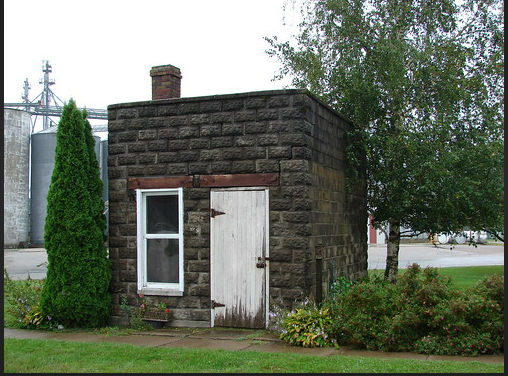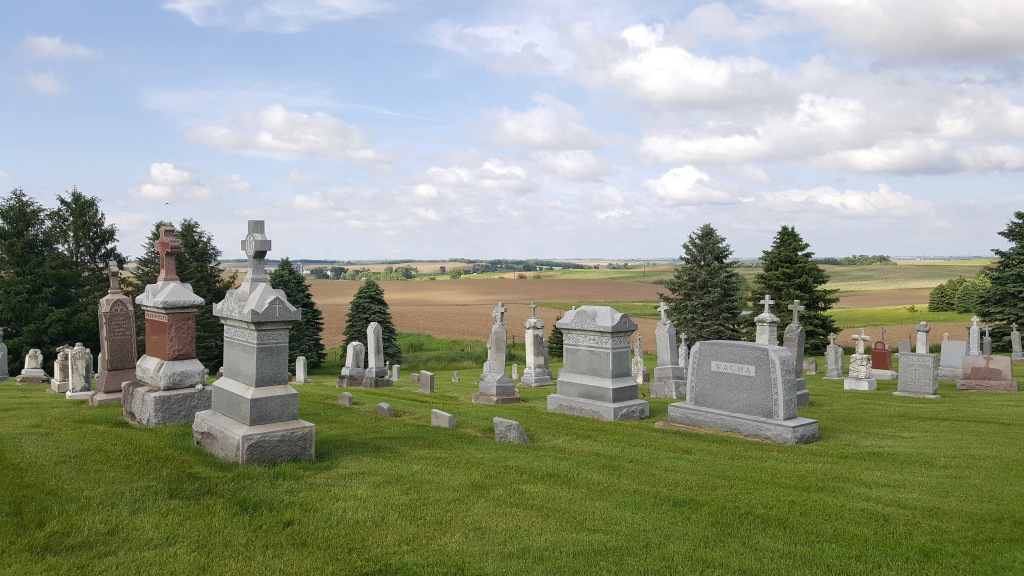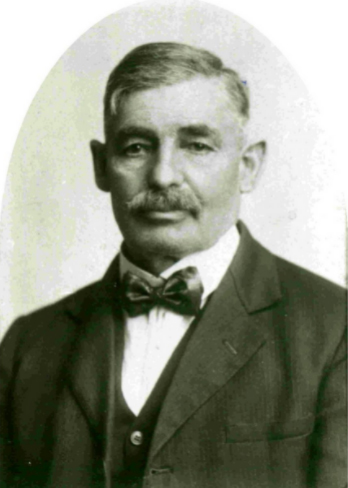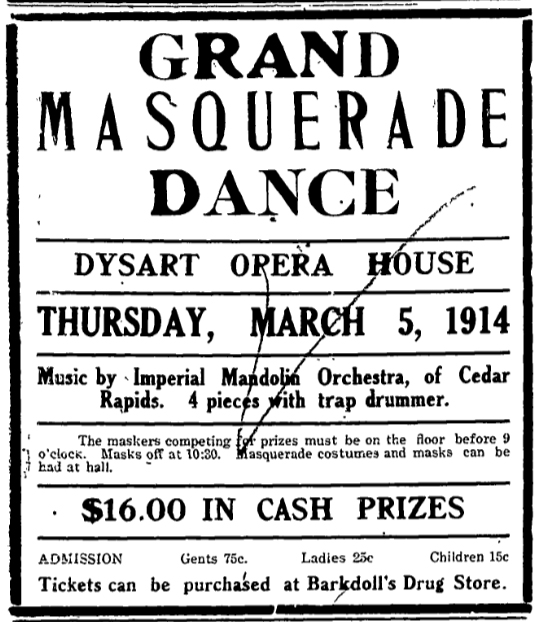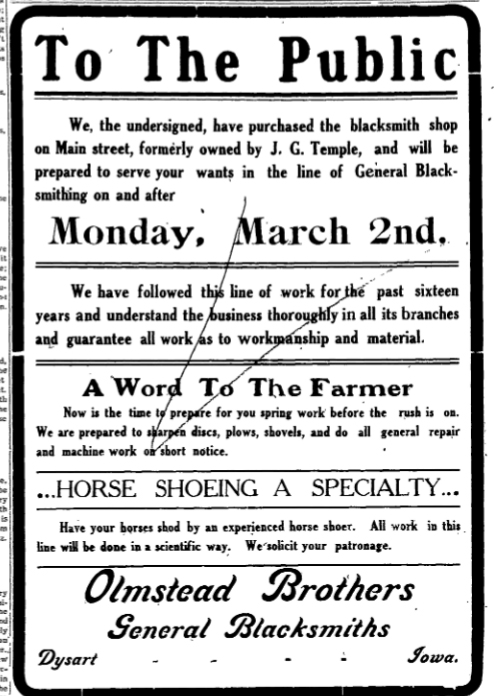The News From Dysart & North Central Iowa
Last Week of March 1914
State News

Explosion at Buxton Coal Shaft
Two Men Lose Their Lives
An explosion at the Consolidated Coal Company at Buxton killed two men. Nineteen mules died in the explosion and timbers were blown from their place on one side of the shaft for a distance of more than half a mile. The dead are John Taylor, timberman, 37 years old and John Williams, pumper, 33 years old. Both men leave families. The blowing out of the track, the destruction of the roof and damaging of timber will cause suspension of work in the mines for several months. There is some doubt if the mine will ever reopen. The mine employed 300 men.
Buxton was located in the southeastern portion of Iowa and was unique in that it was a mining community also because the majority of the population was Africa American. To learn more about Buxton may we suggest the series of articles found here:
Iowa Department of Cultural Affairs
Sterilization of Prisoners
Rudolph Davis, a convict from Linn County, currently serving ten years for burglary, has filed suit against enforcement of the Iowa sterilization law. The case has been filed in Keokuk. He states that he has reason to believe that the prison authorities are about to perform the operation of sterilization on him. Several defendants have been named including three members of the board of parole, the warden and the prison physician. Davis charges that the vasectomy law which was passed by the last legislature is unconstitutional and is in conflict with established laws. Judge Smith McPherson has granted a temporary injunction against enforcement in this case.
According to a report by Lutz Kaelber, Associate Professor of Sociology, University of Vermont, Iowa was the ninth state to pass a sterilization law in the United States. The first law was enacted in 1911 and applied to “criminals, idiots, feeble-minded, imbeciles, lunatics, drunkards, drug fiends, epileptics, syphilitics, etc.”. It allowed directors of the mental institutions to determine whether or not an inmate ought to be sterilized. It was compulsory for those “inmates twice convicted of a felony, or sex-offense other than ‘white slavery.’” For the offense of “white slavery,” (prostitution) one conviction made sterilization mandatory
It was soon repealed and replaced by a second law 1913. As a result of the case reported above, Davis v. Berry, the second law was declared unconstitutional. Subsequently, the third law was created and called for the need of written consent before an operation could be conducted. It also eliminated criminals from the list of offenses requiring sterilization.
Sterilizations under Iowa's Eugenics Laws continued until 1963 and in all 1,910 people were sterilized.
For more information we recommend the following:
https://www.uvm.edu/~lkaelber/eugenics/IA/IAold.html
Sports

1913 World Series
Baseball season is drawing near and interest in the national game is increasing every year. "Major league teams are now at the southern training camps getting in shape for the great struggle which will be in progress in a short time." The Cedar Rapids Republican advertises that they will be covering the national game and all the local action.

William Harrison von Lackum
The Daily Iowan, a publication of the University of Iowa, reports that local boy, Harry von Lackum has won an "I" in basketball. Harry was on the regular varsity team this year and played in most of the games. Steps are being taken at the University to start awarding a certificate for the "I" award along with the varsity letter. The board feels that a man leaving college is unlikely to continue to wear his letter sweater but a certificate can be framed and kept as a more permanent memento.

von Lackum family home, Dysart, Iowa

Dr. and Mrs. Herman (Emma) von Lackum
Harry von Lackum was a son of Dr. Herman J. von Lackum, long time physician in Dysart, Iowa. Born in 1861 on a farm in Wisconsin, he and his family moved to several locations in Wisconsin, Minnesota and Iowa. His father, Peter von Lackum eventually became a doctor and set up a practice in Waterloo. Herman also became a doctor in 1886 and returned to Waterloo to practice alongside his father. He was called to the Dysart area to assist with an operation on Mrs. Andreas Schreiber and remained with her for about a week. Shortly thereafter he opened a practice in Dysart above the Newt Stewart Harness Shop on Main Street which eventually burned. He married Emma Louisa Kullmer on August 6, 1890 and they had five children; 3 boys and 2 girls. In addition to his role as physician, Dr. von Lackum was very involved in the Board of Education. He was a doctor for 62 years, retiring on November 15, 1949. He passed away in 1950 and his wife passed away in 1959. All three of their sons became doctors. Stepping stones in time
Business

New Manager for the Brick and Tile Company
Charles J. Swift of Riverside, Iowa, has been appointed manager of the Dysart Brick and Tile Company and has arrived here to take up his new duties. He has had several years of experience in the business. From now on the plant will operate with a force of 12 men and will work at maximum capacity for the coming year.
H.W. Belke who was the victim of a feather theft reported earlier, has now purchased the Fred Matthiesen building and lot on Main Street. He will fix this up and use it for his butter and egg business.

Studebaker
Cars, Cars, Cars!
Throughout the country, it seems everyone is talking about cars. An increasing number of dealerships are emerging throughout the county. Everyone wants to know who is buying a car and what kind. Also of note to the residents are the number of people taking excursions in their automobiles.



Ford
Local men who have recently purchased automobiles include: the Lincoln Brothers, A.D. Lawyer, Gottleib Kolbe, Frank Burhenn, and Adam Schnell. Meanwhile, the Hullopeter Brothers who recently purchased a farm just north of Dysart are attempting to sell a Harley Davidson 13 Model 5 horse chain drive motorcycle stating they need the money!

Unknown date and persons on early Harley Davidson motorcycles
Farmer Report
The Dysart Canning Company is looking for farmers who want to plant sweet corn under contract with them. Contracts can be made either at the Dysart Savings Bank or at T.B. Grain Co. $7.00 per ton will be paid for corn this season.
Church News


Although not specifically titled at such, this appears to be a listing of housing assignments for the attendees at the conference.

For more information on the Evangelical Church in Dysart, please see: the-news-from-dysart-and-north-central-iowa-last-week-of-february-1914
Advertising






























